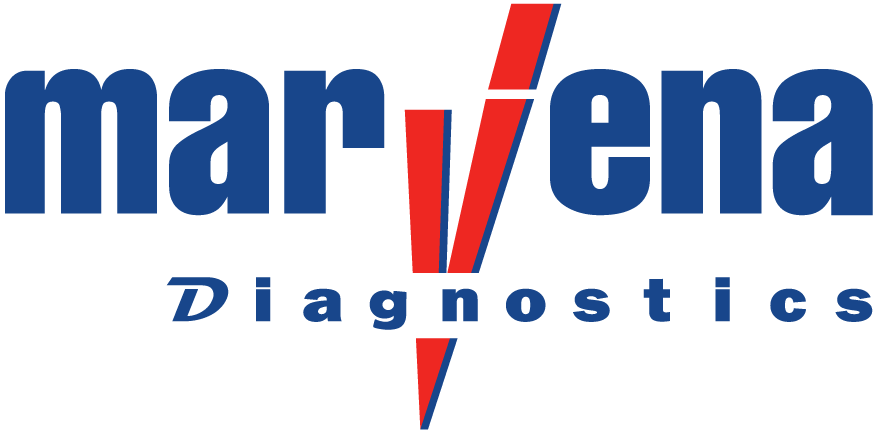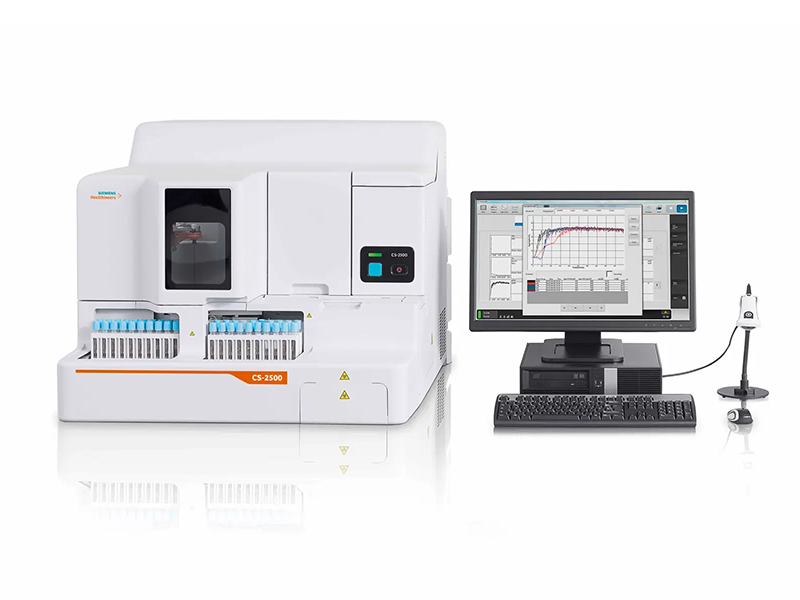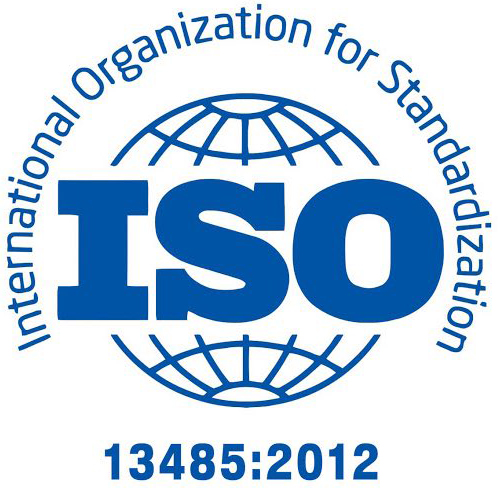Home » Products » Hemostasis » CS-2500 System
CS-2500 System
Mid-volume coagulation analyzer with smartly designed technologies.
The CS-2500 System employs smartly designed technologies, including assay-based preanalytical sample-quality checks using PSI® technology, automated mixing studies, automated platelet aggregation, and clot waveform analysis, for improved efficiency, exceptional accuracy, and reliable first-run results. Equipped with
next-generation PSI technologies, the CS-2500 System takes hemostasis testing to the next level and helps labs truly excel with confidence.
Improve sample management, increase efficiency, and streamline lab workflow
The CS-2500 System is a fully automated, mid-volume coagulation analyzer. It provides:
Sample integrity
PSI technology helps laboratories manage unsuitable samples prior to analysis and provide reliable results on the first run.
Cost-effective consolidation
Automated mixing studies, automated platelet aggregation, clot waveform analysis, and efficient reagent management enable cost-effective consolidations of instruments and staff.
Efficient operation
Sophisticated software, continuous loading, and simplified maintenance support streamlined lab workflows.

Seamless integration
Seamless integration of instruments through shared consumables and comparable assay reference ranges optimizes use across multisite labs.
The CS-2500 System offers mid-volume and multi-site labs advanced features and benefits for a streamlined workflow and high-quality test results on the first run.
Operational efficiency
Improve operational efficiency with a broad assay menu, multiple testing methodologies, sophisticated software, and simplified maintenance
- Medium test throughput using four measurement principles.
- Broad test menu covering a wide range of hemostasis parameters.
- Optical methodology displays clot formation for evaluation of fragile clots.
- Multidilution analysis (MDA), automated repeat, redilution, and reflex testing.
- Simultaneous processing of normal and micro-mode samples.
- Automated QC checks are performed at user-defined intervals, and daily maintenance requires less than 5 minutes.
- Ready-to-use cleaning solution for simplified daily maintenance in just 5 minutes.
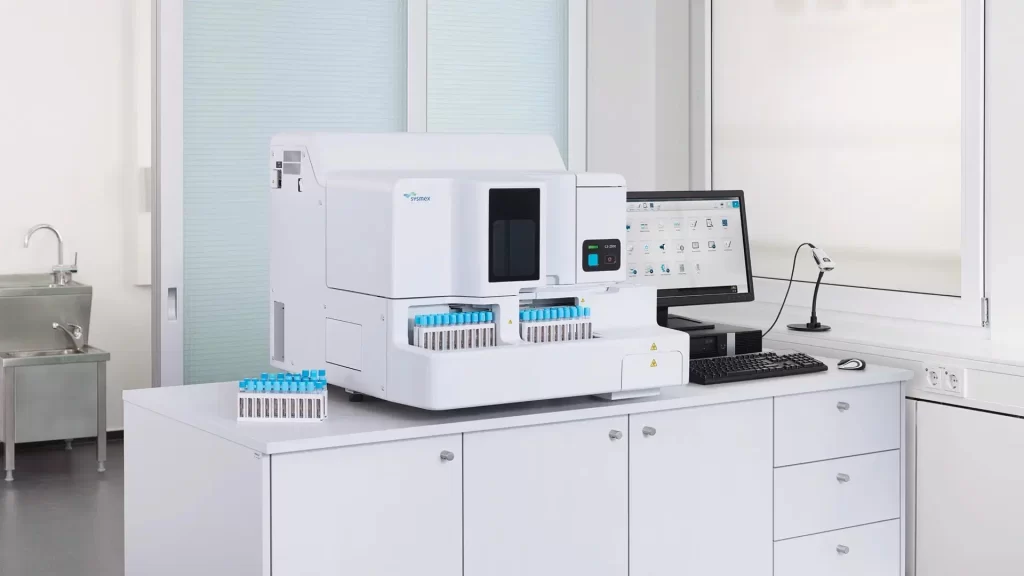
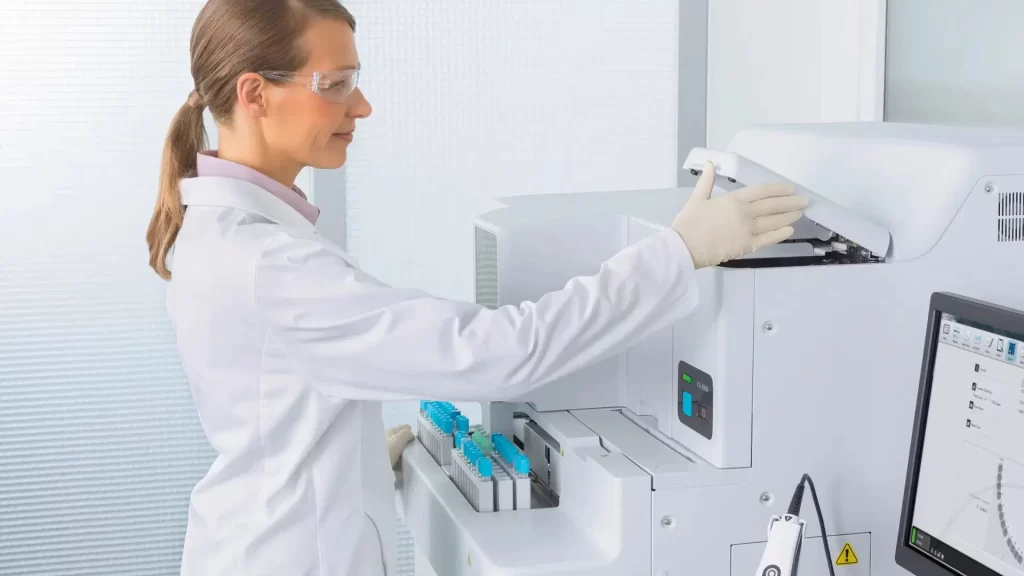
High onboard capacity
High onboard capacity supports high performance and extended walkaway time
- Onboard reagent capacity of up to 3000 tests, 40 reagents, and five additional buffer positions.
- Approximately 180 simultaneous PT/APTT test per hour.
- Multiple lots of same reagents onboard and flexible vial-type management.
- Continuous access to load up to 500 reaction tubes.
- High-capacity system provides extended walkaway time, enables technicians to focus on value added activities.
Reagent management
Advanced reagent management, continuous loading, and extended onboard stability streamline lab workflows
- Extended onboard reagent stability supports economical use of reagents.
- Anti-evaporation caps and reagent chamber refrigerated at approximately 10°C enable reagents to be stored onboard.
- Tilted vials and SLD mini cups reduce reagent dead volume to maximize tests per vial.
- System automatically recognizes reagent fill volume.
- Accessible reagent table enables convenient reagent loading without interrupting sample measurement.
- Continuous loading of consumables and samples helps to streamline workflow.
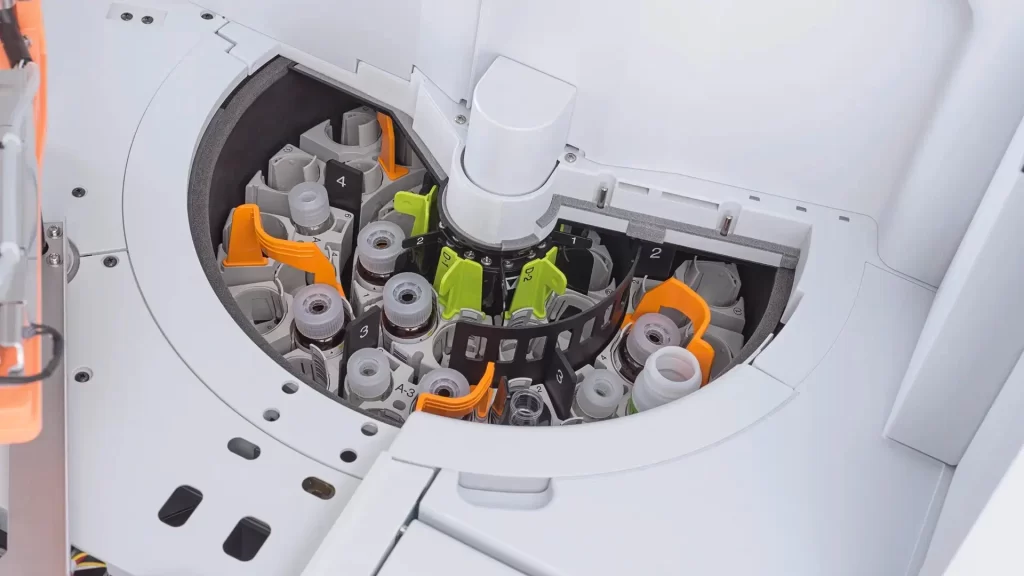
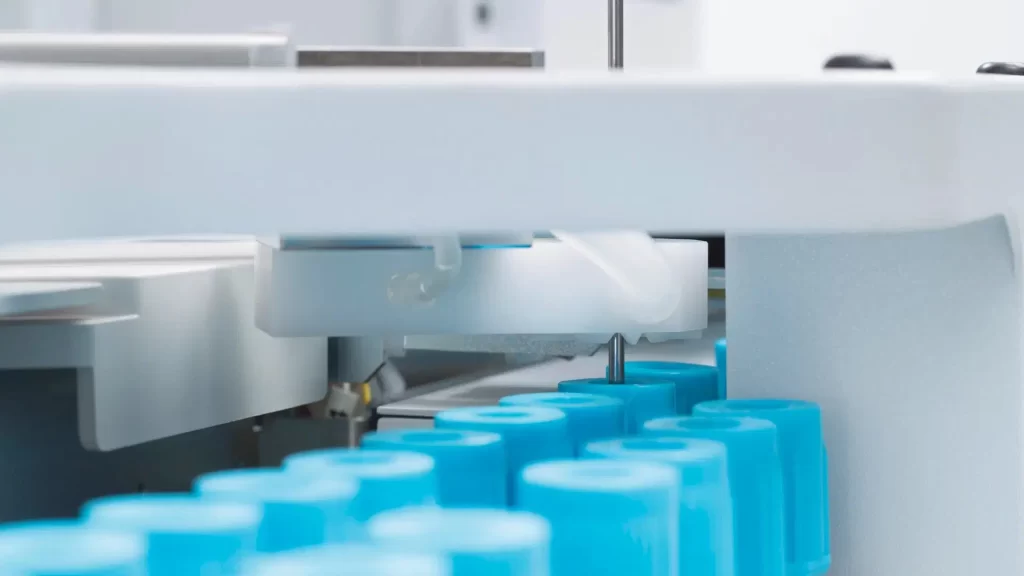
Cap-piercing technology
Flexible, third-generation cap-piercing technology enables dependable throughput for both capped and uncapped samples
- Third-generation cap-piercing technology supports consistent, dependable throughput.
- Cap-piercing technology allows a mix of capped and uncapped sample tubes and cups.
- Secure aliquot technology enables multiple tests per sample without the risk of debris from cap-piercing entering the measurement system.
- Flexible processing of both capped and uncapped samples decreases manual steps and extends walkaway time.
PSI technology
Pre-analytical quality checks using PSI technology ensure sample integrity
- Assay-based, pre-analytical sample-quality checks using PSI technology for HIL interference, sample-volume checks for up to five different primary tube types, and clog detection provide accurate and reliable results on the first run.
- Simultaneous multiwavelength scanning detects and manages unsuitable samples to minimize retests and reflex testing.
- 10 flexible reaction detectors enable high-capacity performance for a variety of test profiles.
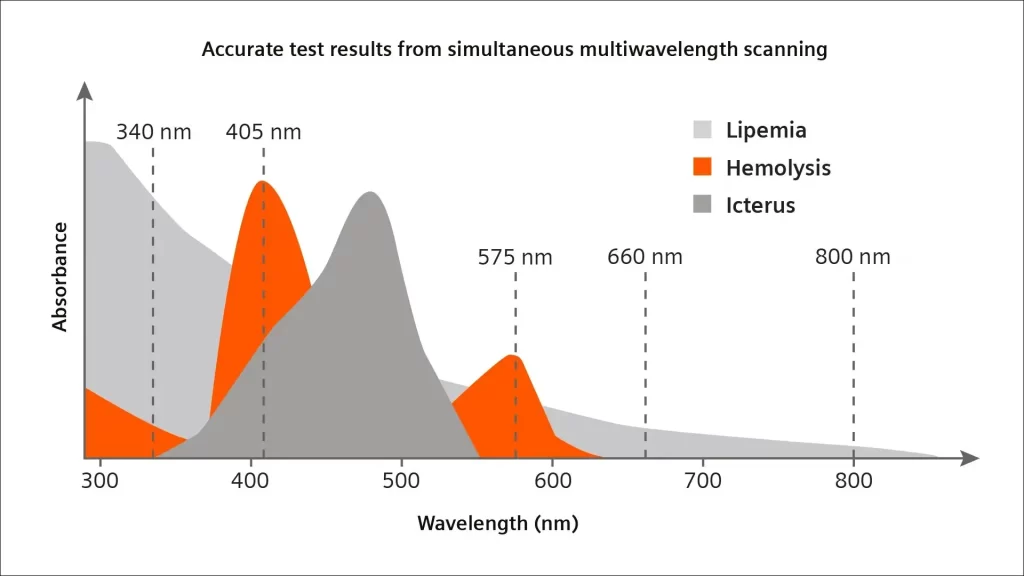
Multiwavelength scanning
Simultaneous multiwavelength scanning enables optimal wavelength selection
- During analysis, clotting reactions are scanned simultaneously at 340, 405, 575, 660, and 800 nm in all detector channels.
- System reduces effect of interfering substances on absorbance spectra by automatically selecting optimal wavelengths.
- 10 reaction detectors enable high-throughput capacity for a variety of test profiles.
Automated mixing studies
Automated mixing studies provide a quick, efficient workflow
- Automated mixing studies employ multidilution analysis (MDA).
- MDA helps clinicians make decisions regarding factor deficiencies and circulating inhibitor patterns.
- Automated dilution of samples with graphical output allows easy analysis.
- Operations are simplified with powerful, easy-to-use graphical analysis tools.
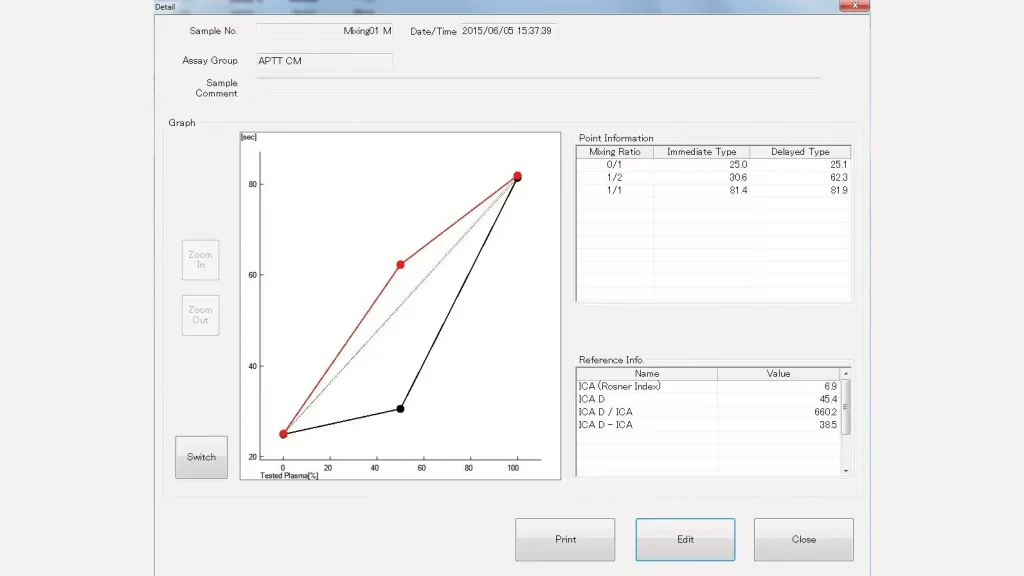
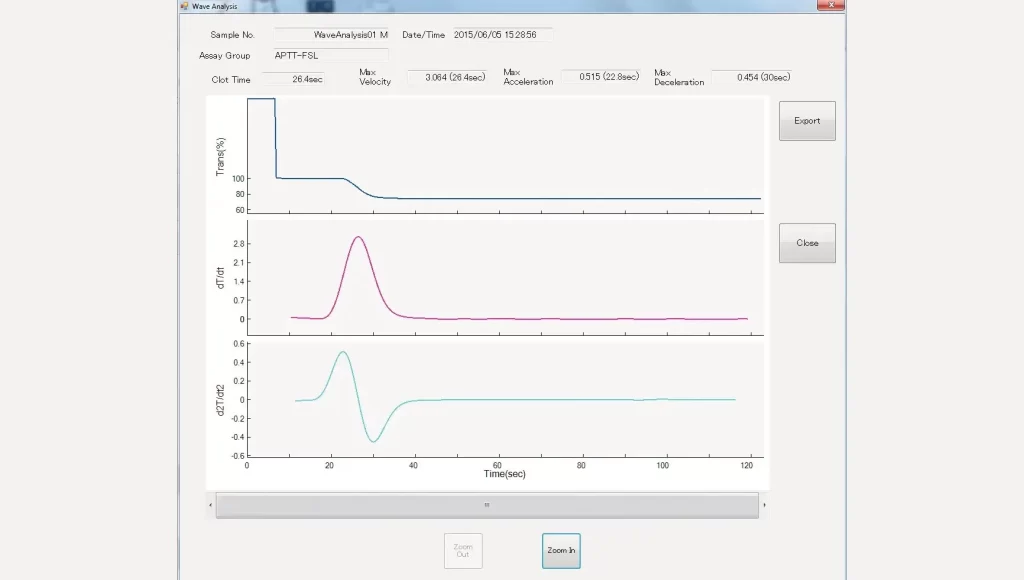
Clot waveform analysis
Clot waveform analysis allows qualitative assessment of clot waveform patterns
- Illustrates the optical reaction profile during PT and APTT measurement, providing qualitative information as well as sensitive, quantitative waveform patterns.
- Allows deeper investigations into certain underlying clinical conditions, such as disseminated intravascular coagulation (DIC), sepsis, antiphospholipid antibodies (LA), factor deficiencies, and presence of heparin.
- Simplifies operations with powerful, easy-to-use graphical analysis tools.
Integrated platelet aggregation
Integrated platelet aggregation reduces the number of steps needed
- Integrated platelet aggregation provides cost-effective system consolidation for detection of inherited, acquired, or drug-induced platelet disorders.
- Streamlined workflow with fewer instruments and less-specialized staff leads to significant time and resource savings.
- Operations are simplified with powerful, easy-to-use graphical analysis tools.
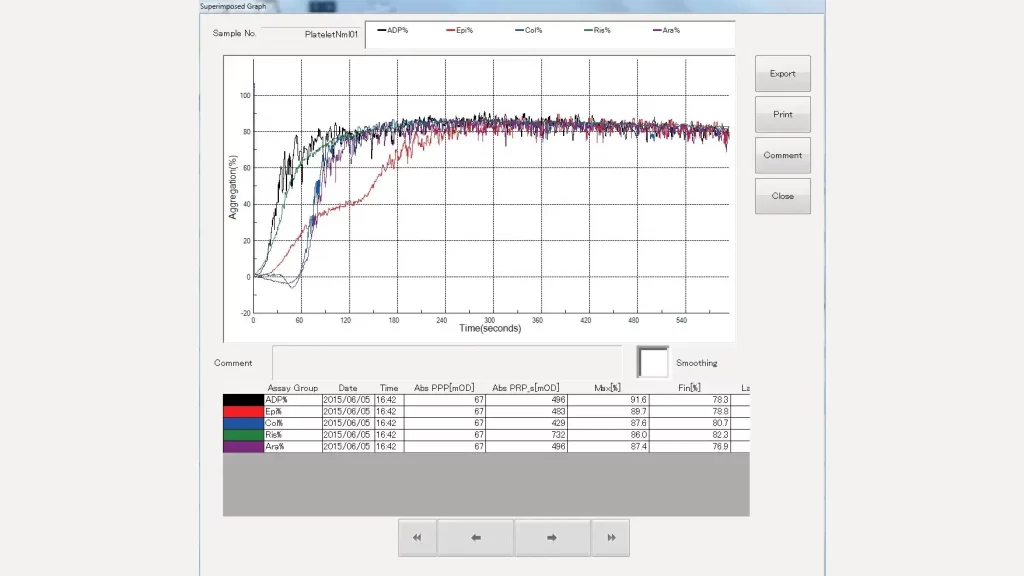
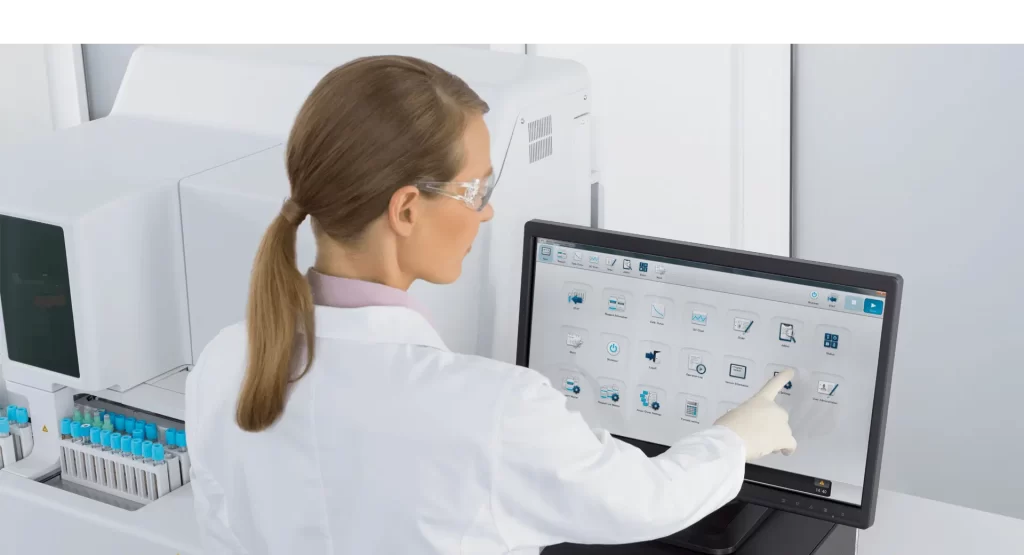
Intuitive system interface
Intuitive system interface helps streamline lab operations and maximize productivity
- 24-in. touchscreen and intuitive software provide an easily customizable, user-friendly interface.
- Interface gives access to onboard help, configurable maintenance, quality control procedures, and real-time monitoring of reagents and consumables.
- Consistent system interface and functionality across the family of CS systems minimize training and provide an intuitive experience from system to system.
Lab-to-lab consistency
True lab-to-lab consistency provides confident multisite patient monitoring
- Results correlate with CN-3000, CN-6000, CS-5100, and CA-600 series systems.
- Seamless integration of instruments and standardized PSI technology optimize use across multisite labs.
- Standardized software, reagents, controls, and calibrators improve convenience, provide cost savings, and reduce waste for more efficient utilization of labor.
- Atellica® Data Manager enables standardized testing protocols and result management throughout the lab and across lab networks.
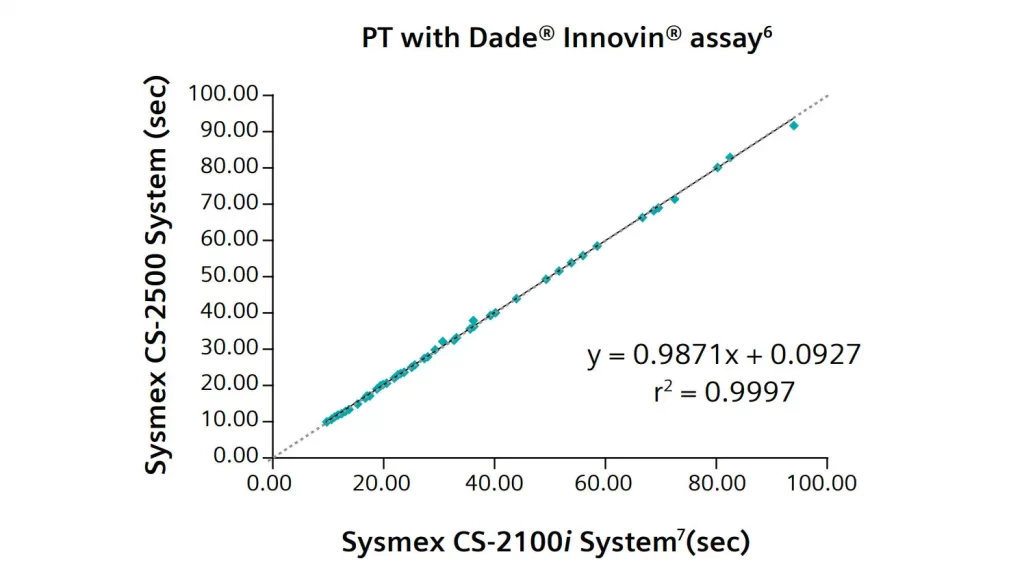
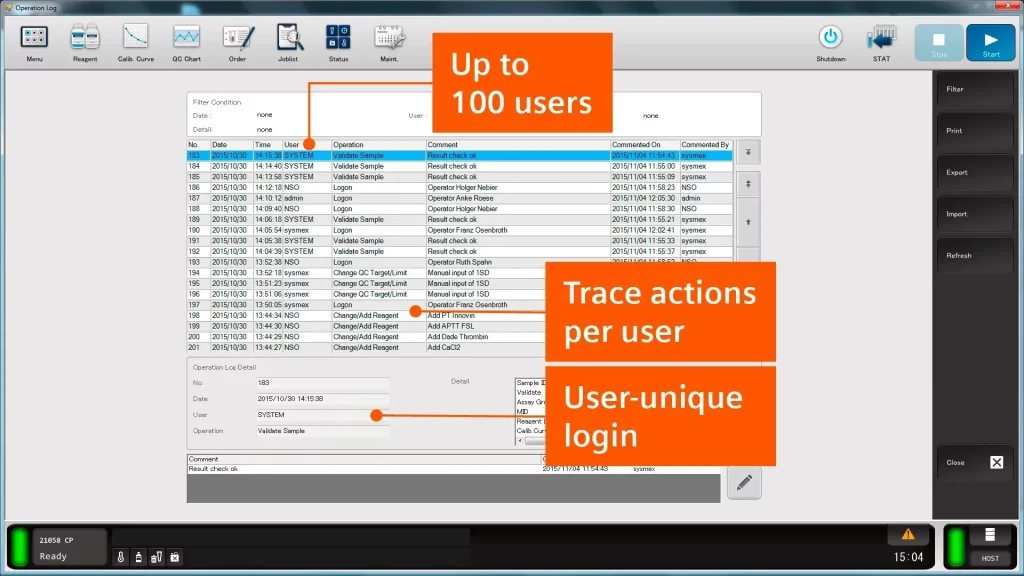
Traceability
Fully traceable results and easy-to-use audit trails provide greater clinical insight
- Comprehensive traceability of sample results through easy-to-use audit trials.
- Audit trials for up to 60 results per sample for 10,000 samples.
- Includes operator ID, time and date stamps, reagent lot information, reagent table temperatures, test protocol number, dilution ratio, calibration curve and measurement-result information, operation and error logs, maintenance and QC history, automatic back-up and data storage.
Dimensions
Main unit
Approx. 775 (W) × 895 (D) × 685 (H) mm
30.6 (W) × 35.2 (D) × 27.0 (H) in.
Pneumatic unit
Approx. 280 (W) x 355 (D) x 400 (H) mm
11.1 (W) x 14.1 (D) x 15.7 (H) in.
Terminal (PC)
Approx. 338 (W) x 381 (D) x 100 (H) mm
13.3 (W) x 15.0 (D) x 3.95 (H) in.
Terminal (monitor)
Approx. 556 (W) x 122.5 (D) x 403.5 (H) mm
21.8 (W) x 4.8 (D) x 15.8 (H) in.
Measurement channels
Method channels
10 single channels for clotting, chromogenic, immunoassay, and aggregation methods
Measurement channels
10 wells (mixing function using stir bars possible for 4 wells)
Principle
Simultaneous five-wavelength photometry in all detector channels (340, 405, 575, 660, and 800 nm wavelengths)
Sample capacity
Maximum load
50 samples; five racks with 10 samples per rack
Throughput (tests/hour, approx.)
Throughput (tests/hour)
PT
APTT
Approx. 180
Approx. 180
PT/APTT
PT/APTT/AT/DD
Approx. 180 simultaneous
Approx. 95 simultaneous (results for normal-mode processing)
Operation
Access mode
Continuous reagent-, consumable-, and sample-loading capability
STAT samples
Five priority positions
View calibration
Graphical display of calibration curves from up to 10 different reagent lots/parameters
Auto calibration/auto QC
User-defined time interval or with new reagent vial
Reaction tubes
Type
Single reaction tubes
Loading
Automatic continuous access, 500 reaction tubes onboard
Why Choose Us
We believe that success is achieved with professionalism, integrity and perfect teamwork, built on the high moral values of our employees.
Our policy is based on impeccable planning, control and execution, through which we achieve maximum satisfaction of our customers.
Professional
customer service
A wide range of laboratory analyzers
Trained and experienced specialists
Certificate
ISO 13485:2012
